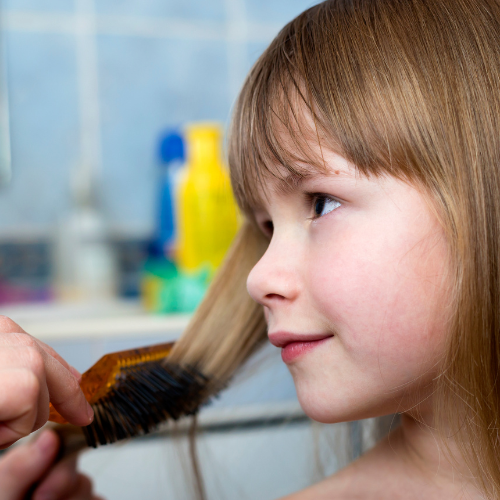A New Year for Head Lice – Checking for Head Lice after School Breaks

School children may go back to class in January with more than their new sweaters and shoes. There’s a good chance they might return with something they can share with their classmates—head lice.
This winter could be booming for the blood sucking, six-legged insects that survive by attaching themselves to a scalp. During Christmas break, many children are more social and have more contact with playmates, thus increasing the chance for spreading lice.
Every winter we see a large increase in business after the winter break and we expect to see even more this year. Although lice do not pose medical problems, it can be a nuisance for families.

Over the past few years, Head Hunters has seen a increase in the number of children with live lice, even though their parents have used the pediatrician and school recommended shampoo to rid their scalps of the tiny bugs. Lice are becoming more resilient and children are returning to school after having a shampoo treatment only to find that they are still infested. Some schools require a box top from a lice treatment product as evidence to send the child back to class. Even older students and adults seem to be getting lice more often than in the past.
Head Lice are most often found in 3- to 11-year-olds. In this age group, when children are playing together their heads often touch. They then go home to snuggle with parents and transmit lice to them.
There are ways to be proactive and limit your child’s chances of getting lice. Here are some tips from Head Hunters:
- Keep children’s hair contained in braids, buns, and ponytails
- Educate them to not touch heads with other children
- Do not share brushes, combs, and hair accessories
- Perform a Wet Head check weekly looking for the presence of head lice
If a child does complain of itchiness or a live bug is visible, Head Hunters does not recommend using the prescription or over the counters shampoos. These products are made of chemicals/pesticides and are not effective enough.
Instead, it is better to invest in a good lice comb and focus on removing the head lice. The hair must be combed meticulously until the lice and eggs are gone.
“This arduous process is enough to drive families crazy. I’ve had grown women break down in tears after trying to rid their children of lice. We get it done in one afternoon here and we save families from a lot of unnecessary stress.”



